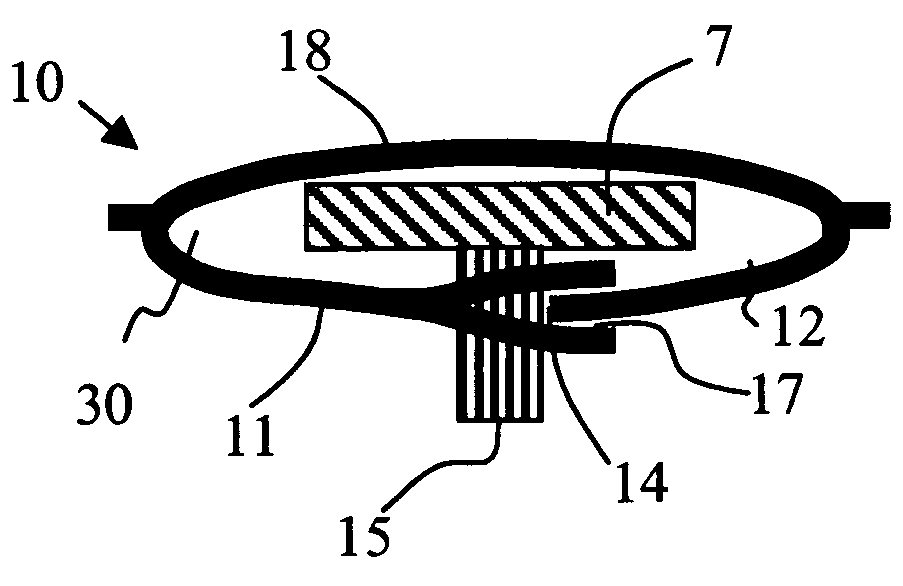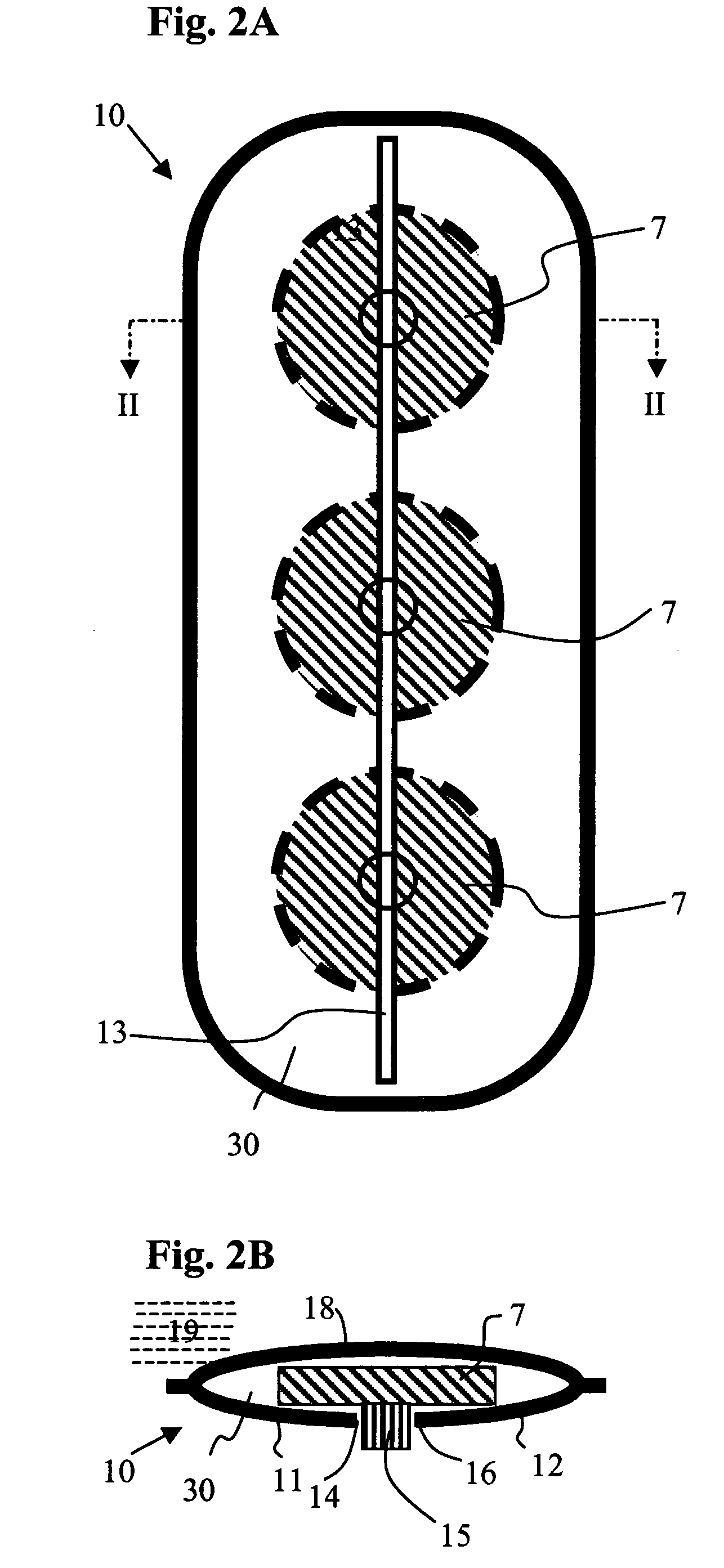Button protector for laundering, dry-cleaning and ironing operations
a button protector and dry cleaning technology, applied in the direction of press-button fasteners, washing apparatus, textiles and paper, etc., can solve the problems of large cost, delay in fulfilling orders, chipping and partial breakage, etc., to prevent seepage of laundering, reduce the opening of the protective cover, and eliminate the effect of button chipping and chemical degradation
- Summary
- Abstract
- Description
- Claims
- Application Information
AI Technical Summary
Benefits of technology
Problems solved by technology
Method used
Image
Examples
Embodiment Construction
[0024]The present invention provides a flexible, easily detachable button protector especially suited for use during laundering dry-cleaning or hot iron processing of garments. The button protector forms an envelope, which is composed of a flexible material with repellent properties for common laundry cleaning or dry-cleaning fluids. It surrounds the button, thereby providing a flexible, fluid repellent enclosure that prevents entry of cleaning fluids. The button is inserted into a cavity of the protector through a slit-like opening sized to accommodate passage of the button therethrough. A mini-slit is provided on at least one side of the envelope to accommodate threads holding the button to the garment. Creation of a minimal slit opening prevents entry of fluids into the cavity. In a first embodiment, the slit is formed by two overlapping flaps on one side of the protector. Hydraulic pressure in the cleaning fluid operates to close the overlapping flaps, thereby preventing entranc...
PUM
 Login to View More
Login to View More Abstract
Description
Claims
Application Information
 Login to View More
Login to View More - R&D
- Intellectual Property
- Life Sciences
- Materials
- Tech Scout
- Unparalleled Data Quality
- Higher Quality Content
- 60% Fewer Hallucinations
Browse by: Latest US Patents, China's latest patents, Technical Efficacy Thesaurus, Application Domain, Technology Topic, Popular Technical Reports.
© 2025 PatSnap. All rights reserved.Legal|Privacy policy|Modern Slavery Act Transparency Statement|Sitemap|About US| Contact US: help@patsnap.com



